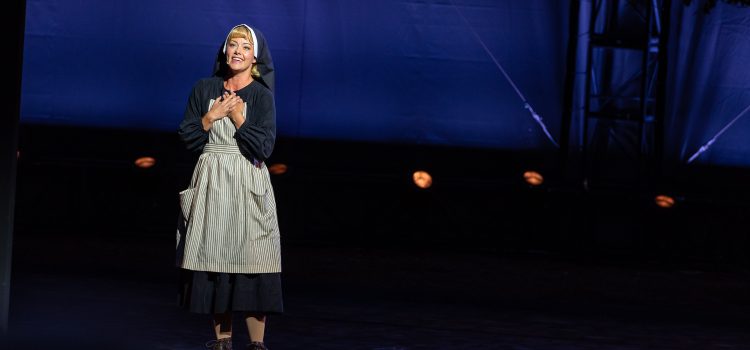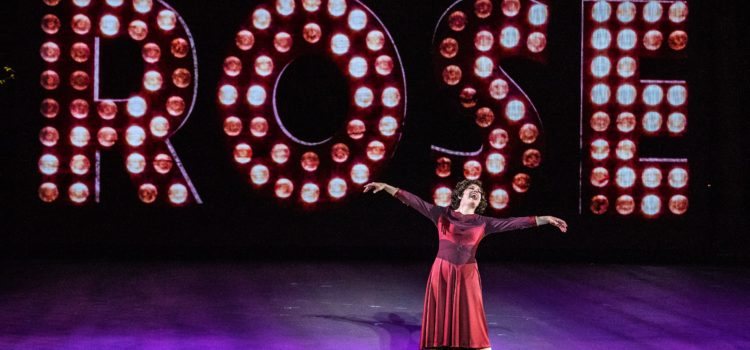By Lynn Venhaus
This much I know is true: “The Sound of Music,” created during the golden age of musicals — (and the reason it’s referred to as a golden period is crystal clear), is such a crowd-pleaser that it will never fall out of favor.
The Muny’s latest creation of the evergreen 1959 Rodgers and Hammerstein classic drew 7,847 on opening night, and you could feel the joy in the air. With the arrival of Alpine weather in St. Louis, it was also a pleasurable experience outdoors.
By the time Bryonha Marie Parham, as Mother Abbess, finished her powerful and poignant rendition of “Climb Ev’ry Mountain,” which closed the first act, the crowd leapt to its feet with thunderous applause. At curtain call, a hearty standing ovation began early and when Kate Rockwell, radiant as the sunny Maria Rainer, took her bow, the cheers were deafening.
The tension-filled book by Howard Lindsay and Russel Crouse, based on the real-life story of widowed Captain von Trapp of the Austrian Navy, his budding romance with governess Maria, who cares for and tutors his seven children, and how they flee after the Third Reich takeover of their country in 1938, provides dramatic and emotional depth.
Through this last collaboration of influential composers Oscar Hammerstein II and Richard Rodgers, they’ve integrated some of their best songs — The Sound of Music boasts their most popular hits – to guarantee widespread appeal. Then, add the iconic Oscar-winning 1965 film, which cemented its place in pop culture history.
This is the 11th time in 57 years that the Muny favorite has been presented in Forest Park, and the first since 2010. The experienced creative team has honored the beloved musical by not varying from a traditional approach – why mess with a time-honored story or the lush score? and the lush score but keeping it fresh with rising talent and new outlooks.
Freshened up with rising talent and new outlooks, Director Matt Kunkel has capably emphasized the show’s major arcs of love, faith and courage.
Music Director Ben Whiteley smoothly conducts the velvety string-laden score, reminding everyone why we know all the words and music to “Do-Re-Mi,” “My Favorite Things,” “Edelweiss” and the title song.
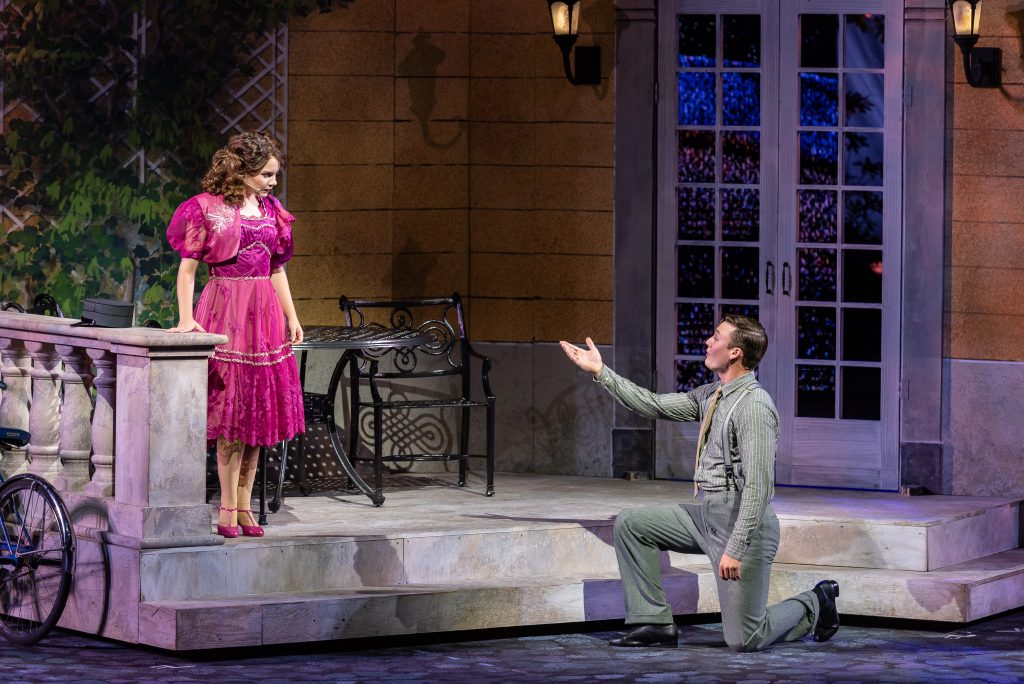
With many exceptional voices, the ensemble comfortably handles some of the most enduring standards in the American theater.
While some casts are more dynamic than others in Muny productions, striking a delicate balance in tone with nuns and Nazis, the women lead the way here.
And not just on stage, but behind-the-scenes. For the first time in Muny history, Shelby Loera is the lead lighting designer on a show. In 103 seasons. Bravo for breaking that ceiling!
Caite Hevner took charge of the video design and Beth Crandall choreographed the sophisticated party dances and the peppy kids’ numbers. Paige Hathaway was the scenic designer, using the new trees as a backdrop.
Costumes were designed by Tristan Raines, a familiar fashionista at the Muny, and the wedding scene finery was a standout.
As usual, the von Trapp children steal the show. You expect the actors playing Liesl (Elizabeth Teeter), Friedrich (Victor de Paula Rocha), Louisa (Amelie Lock), Kurt (Parker Dzuba), Brigitta (Jillian Depke), Marta (Abby Hogan) and Gretl (Kate Scarlett Kappel) to be endearing, but these kids are not only supremely talented but project professionalism on stage.
And they harmonize beautifully – especially their fun “The Lonely Goatherd” number during a frightening thunderstorm and the always special “So Long, Farewell.”
As the eldest girl, Teeter, daughter of local theater legend Lara Teeter, demonstrated that she is a poised and polished performer wise in years.
She has appeared on Broadway with Helen Mirren in “The Audience” and as Jane Banks in “Mary Poppins,” not to mention cute-friendly roles at the Muny, including Flounder in “The Little Mermaid” and Gretl in the 2010 “The Sound of Music.”
An accomplished dramatic actress, she can be seen as fragile Laura in “The Glass Menagerie” at the Tennessee Williams Festival in St. Louis Aug. 19-29.
With their clear confident voices, Teeter and Andrew Alstat, as Rolf, deliver a strong “Sixteen Going on Seventeen.” Unfortunately, she is saddled with an unrealistic-looking brown wig, an odd choice, which overwhelms her face.
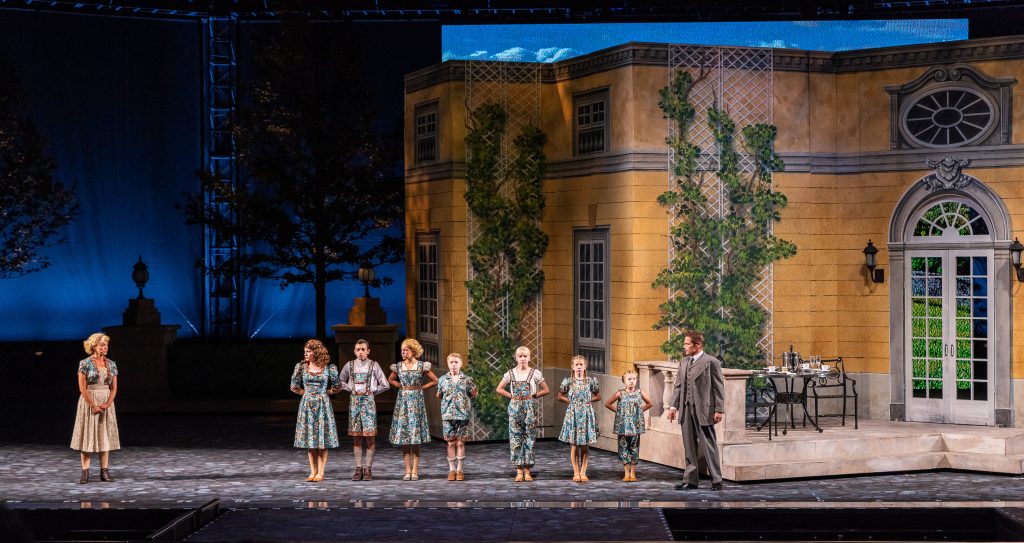
Another distraction is that Michael Hayden does not fit the Captain von Trapp role as we’ve become accustomed to over the years –typically imposing and dashing. A Tony nominee for “Judgment at Nuremberg,” who also has Shakespeare credits, Hayden obviously is a noteworthy performer, but something was “off,” and he certainly didn’t click with Rockwell like Georg and Maria should. (I wondered if he was ill? There is usually an underlying reason.). He seemed tentative in spots and wasn’t comfortable with the guitar on “Edelweiss.”
In addition, his suits appeared ill-fitting and the coat of his dress uniform he wore at the wedding was way too long. This is a rare misfire from the Muny costume shop, normally known for their crisp tailoring.
He’s not the worst Captain von Trapp I’ve seen. That distinction goes to the wooden and unprepared George Peppard, yeah the guy in “Breakfast at Tiffany’s,” in 1982. However, I have heard that “Dallas” star Ken Kercheval tops that list in a 1993 version, where he had to use the book.
Costumes were designed by Tristan Raines, a familiar fashionista at the Muny, and the wedding scene finery was a standout.
Two bright spots are fan favorites Jenny Powers and John Scherer. The elegant and statuesque Powers glides across the stage as Elsa Schraeder, also known as the Baroness, and has a lovely duet, “How Can Love Survive?” with Scherer as Max, the cynical impresario.
The pair are an effortless match. Powers has been one of the Muny’s most durable leading ladies – as “Mary Poppins,” Morticia in “The Addams Family,” Abigail Adams in “1776,” Tanya in “Mamma Mia!” and Guinevere in “Camelot,” to name a few.
Scherer, known for his impeccable comic timing, has been in “Kinky Boots,” “Young Frankenstein,” “Spamalot” and “The Addams Family.”
Fine supporting work is carried out by David Hess as the dutiful butler Franz and St. Louis actors Michael James Reed as the imperious and threatening SS officer Herr Zeller, Leah Berry as skeptical head of the postulants Sister Margaretta, April Strelinger as stern housekeeper Frau Schmidt, and versatile Jerry Vogel doing triple duty as the officiating priest at the wedding, Baron Elberfeld and Admiral von Schreiber.
But the show belongs to the delightful Rockwell, so memorable in “Tarzan” and “Beauty and the Beast” during the past decade. She’s a bona fide star, pitch perfect as the spunky and big-hearted Maria. It’s a graceful and winning performance that easily captured the audience’s heart.
Whether it’s a fond childhood memory or a family favorite passed down through generations, “The Sound of Music” pleased the theatergoers ready to be enchanted.
Its inspiration was intact, too – go climb those mountains!
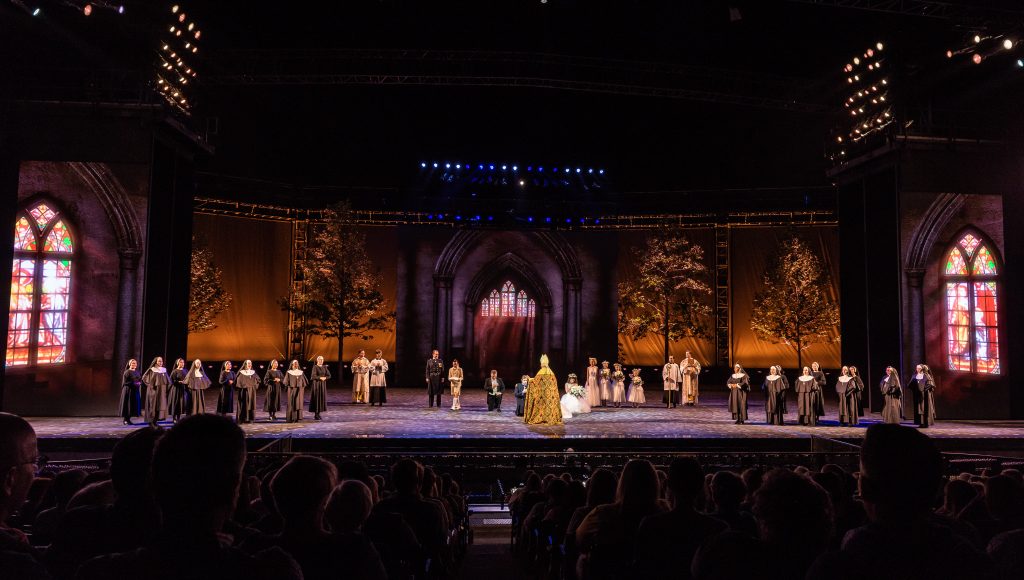
“The Sound of Music” runs Aug. 3-9 at the Muny outdoor stage in Forest Park. Tickets can be purchased in person at the box office, online at muny.org or by calling 314-361-1900, ex. 1550.
The remaining shows of the 2021 season are Seven Brides for Seven Brothers (Aug. 12 – 18), On Your Feet! (Aug. 21 – 27) and Chicago (Aug. 30 – Sept. 5). Emerson is the season sponsor. For more information, visit muny.org.
To stay connected virtually and to receive the latest updates, please follow The Muny on their social media channels, including Facebook, Instagram and Twitter.
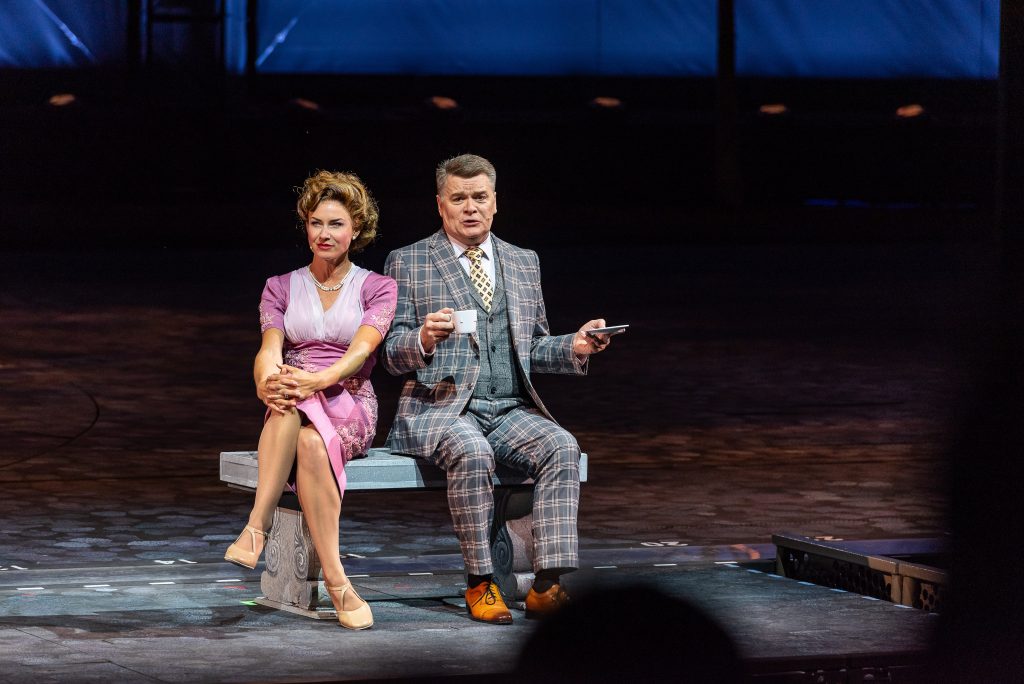

Lynn (Zipfel) Venhaus has had a continuous byline in St. Louis metro region publications since 1978. She writes features and news for Belleville News-Democrat and contributes to St. Louis magazine and other publications.
She is a Rotten Tomatoes-approved film critic, currently reviews films for Webster-Kirkwood Times and KTRS Radio, covers entertainment for PopLifeSTL.com and co-hosts podcast PopLifeSTL.com…Presents.
She is a member of Critics Choice Association, where she serves on the women’s and marketing committees; Alliance of Women Film Journalists; and on the board of the St. Louis Film Critics Association. She is a founding and board member of the St. Louis Theater Circle.
She is retired from teaching journalism/media as an adjunct college instructor.

